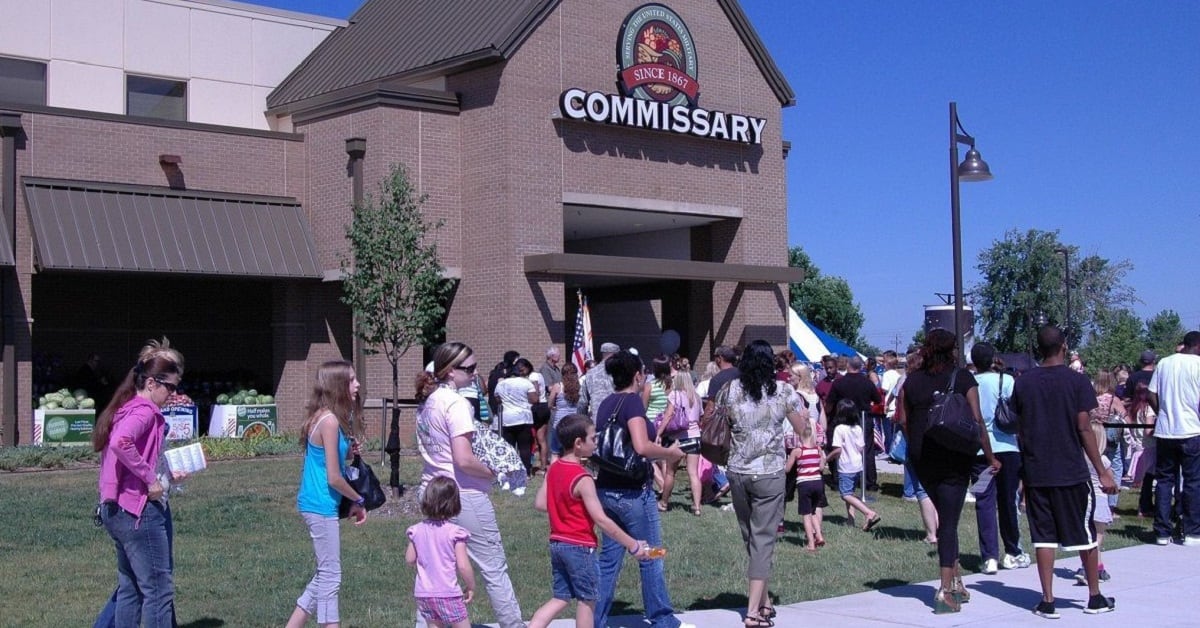Commissary customers are seeing increasing savings, and they’ll be seeing more initiatives over the next few months to increase bargains and make shopping easier.
Savings at the commissary ticked upward for the first three months of the year, compared to 2018 and the baseline comparison of 2016. Savings for the period of January through March increased to 22.2 percent overall in the U.S., based on price comparisons, according to slides presented by retired Rear Adm. Robert Bianchi, Defense Department special assistant for commissary operations, at a meeting of the American Logistics Association.
That’s up by 1.9 percentage points from the same time period for the same stores in 2018, and up 2.3 percentage points from that period in 2016, when the Defense Commissary Agency established its baseline savings for customers. Congress requires that DeCA maintain savings at levels that are reasonably consistent with the 2016 baseline level.
“I’m pleased to hear that [the Defense Commissary Agency] has successfully increased the savings level for military families who shop at the commissary. I know it must be a challenge to meet that benchmark," said Eileen Huck, government relations deputy director for the National Military Family Association.
“They do seem to be working hard to respond to military families’ wants and needs — hopefully that will encourage more families to shop at their commissary.”
Savings vary by region, as the cost of living varies by region. Each commissary region saw an increase in the savings margin, with the largest savings increase being in the West Coast states, increasing to 24.6 percent -- 3.1 percentage points up from last year’s tally of 21.5 percent. Overseas savings fell by 0.5 percentage points, down to 43.8 percent.
The calculations include applicable sales tax in commercial grocery stores and the 5 percent surcharge at commissary stores.
| Commissary region | Jan-March savings compared to civilian stores |
|---|---|
| New England | 22.2% |
| South Atlantic | 20.4% |
| South Central | 19% |
| Pacific | 24.6% |
| Mountain | 20.3% |
| North Central | 22.5% |
| Alaska/Hawaii | 37.7% |
| U.S. | 22.2% |
| Overseas | 43.8% |
| Global weighted average | 25.7% |
Each quarter, manual comparisons are done at one-fourth of the commissary stores, with the same stores shopped in the same quarter of the year. Congress requires DeCA to report on savings regionally, comparing prices with up to three commercial grocers, including super centers, in the local area of each commissary in the U.S. In this past quarter, 45 stores were shopped by a third party, and prices were compared on about 1,000 products, based on what commissary officials describe as a “shopper’s typical market basket.”
An additional regional comparison is conducted of 38,000 products using market pricing data.
Other initiatives:
- The Click2Go program – online ordering and curbside grocery pickup – will expand to four more stores before the end of September. Those are Naval Air Station Oceana, Va.; Fort Belvoir, Va.; Quantico Marine Corps Base, Va.; and Andrews Air Force Base, Md. Commissary officials have been conducting a test of the Click2Go program for years, at Fort Lee, Va.; Offutt Air Force Base, Neb.; and Travis Air Force Base, Calif. They launched the program at Fort Eustis, Va., on March 1, using their new technology. As of April 1, customers pay a $4.95 service fee for each order at Fort Eustis. The Click2Go programs at Fort Lee, Offutt and Travis will end on June 1, but will return to those locations in the future as the commissary agency makes the transition to the new technology.
- Commissary officials are introducing 66 additional commissary store brand items through the end of September.
- Commissary officials are expanding their selection of “Your Everyday Savings -- YES” items. They’ve seen a 50 percent increase in dollar sales of these items since June, 2018.
- They’re adding savings and promotions to the top 50 commissaries in terms of sales, to increase sales. That will include Deal of the week, extra savings of family size and freezer filler meat buys, and “hot produce” specials like truckloads of watermelons.
Karen has covered military families, quality of life and consumer issues for Military Times for more than 30 years, and is co-author of a chapter on media coverage of military families in the book "A Battle Plan for Supporting Military Families." She previously worked for newspapers in Guam, Norfolk, Jacksonville, Fla., and Athens, Ga.




